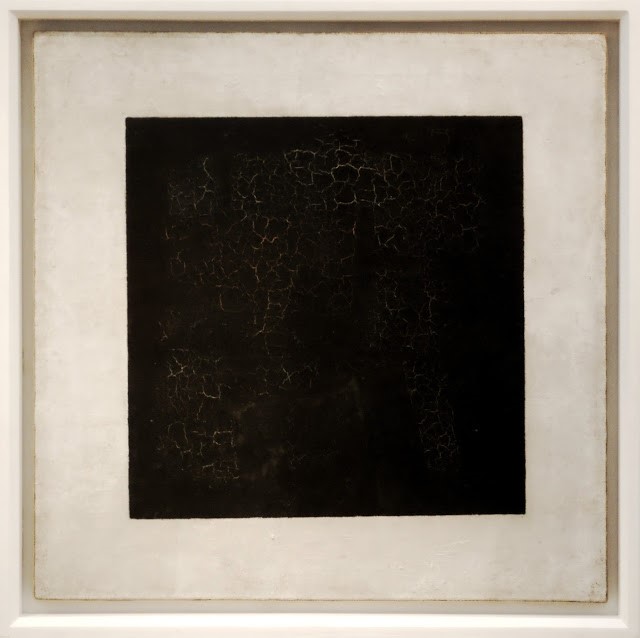
It may be hard to fathom, but the image above is one of the most famous paintings in the history of art.
If you’ve ever strolled through a museum of modern art, you’ve probably thought, “My six-year-old could do that!”
Or in the case of BlackSquare by Kazimir Malevich: “How is that different from my printer’s test pattern when I install a new cartridge?”
But Malevich (1879-1935), who was one of the most celebrated painters of the Soviet Union, was making an entirely serious statement about reality. He launched an artistic movement called Suprematism. He was convinced of the supremacy of geometric forms – especially the square and the circle – to create “pure artistic feelings” that would help us understand the meaning of the universe.
In 1913 he hand-painted a black square onto a canvas. Malevich later wrote, “I have transformed myself in the zero of form.”
Um, would you mind running that past us one more time?
Those words appear to be his way of saying, “I’ve gone as far as I can possibly go. I’ve taken the elevator all the way down to the basement. There’s nothing more basic than a black square. This is Ground Zero. This is the first letter in a new alphabet of ultimate meaning.”
And what did Malevich end up with?
No beauty. No color. No mystery. No message. No hope. Just a square, about which you can feel whatever you want. Since Malevich believed there was no fixed meaning to the cosmos, Black Square can mean anything. Or nothing.
Malevich hoped his masterpiece would help him search for God. Or perhaps reveal that he was the creator of his own life and his own meaning.
There are a million Velvet Elvis paintings hanging in American family rooms, and countless prints of dogs playing poker. Black Square is still searching for an audience. Modern art tends to make most people shrug or scoff or squint or laugh out loud.
The late theologian Francis Schaeffer suggested a different response: First we need to weep. We must do our best to understand the questions raised by gifted artists, and to feel the agony of their search for truth.
And that should lead to a conversation, not to condemnation.
It’s worth noting that two of the most significant verses in the Bible, one in the Old Testament and one in the New, both begin with the same word: “Come, let us reason together, says the Lord…” (Isaiah 1:18); and “Come to me, all you who are weary and heavy laden…” (Matthew 11:28, Jesus speaking).
God invites all of us into a conversation: Does life have an actual meaning, or do we have to invent one for ourselves?
Come.
Let’s see where that conversation leads.
